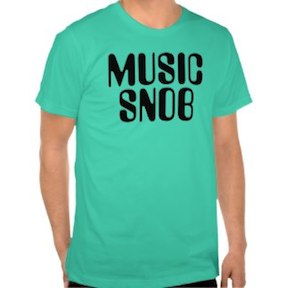 Canadian violinist James Ehnes yesterday wondered publicly in The Huffington Post why lighter, showier violin music has dropped off the concert radar in recent years in favour of serious sonatas and concertos.
Canadian violinist James Ehnes yesterday wondered publicly in The Huffington Post why lighter, showier violin music has dropped off the concert radar in recent years in favour of serious sonatas and concertos.
- Classical Music 101: What Does A Conductor Do? - June 17, 2019
- Classical Music 101 | What Does Period Instrument Mean? - May 6, 2019
- CLASSICAL MUSIC 101 | What Does It Mean To Be In Tune? - April 23, 2019
In fact, this has happened in all areas of classical music.
The songs of Paolo Tosti? Even Ben Heppner’s stature and enthusiasm couldn’t bring them back a decade ago.
The piano pieces of Moritz Moszkowski and Ignaz Paderewski? Aside from being trotted out as (very) occasional encores, they are relegated to the same dusty back room as 78 rpm laqueur discs.
In Toronto, at any rate, the real buzz and enthusiasm always seems to be for the serious operas, not fluffier fare. And don’t even mention operetta, bitte.
Ehnes is right; the art music concert has somehow managed to become more serious than ever.
Unfortunately for the sake of clear argument, he has tangled his point up with several other issues — including the nature of interpretation and what constitutes a warm audience, among other points. But it’s well worth reading — especially this paragraph:
The violin literature is, of course, blessed with a tremendous number of works by history’s greatest and most profound composers. But it is also blessed with a bountiful quantity of the finest “lighter fare.” So what has happened to the Wieniawski, the Sarasate, the Paganini, the Kreisler? We hear this music in our conservatories, but all too rarely on the concert circuit, despite the fact that this is the music to which many concertgoers respond most warmly and enthusiastically. It is also worth pointing out that this kind of music often most clearly reveals the personality of the performer. It is my opinion that when one plays Beethoven or Brahms, it should sound like Beethoven or Brahms (“Beethoven Concerto, as interpreted by violinist X”). However, with this great virtuoso music the performer can, and perhaps should, impose somewhat more of himself or herself on the performance (“violinist X plays Wieniawski’s Polonaise in D”). Food for thought, considering that a common (if bizarre and of questionable veracity) lament of music critics today is that performers have lost their individuality.
(You can read all of Ehnes’s words here.)
Why are art music fans so serious?
Yesterday, in conversation on Radio-Canada about the Canadian Opera Company’s new commission from Rufus Wainwright, the host accused me of snobbery. It took less than a heartbeat for me to realise that this is true.
I advocate for more openness in audiences, for allowing people to take pictures and to text. I suggest people organise concerts in less formal settings — but then all too often realise later that I prefer an hermetically sealed, mausoleum-silent concert hall.
I think a programme made up of miniatures could be brilliant. But then I sit down with piles of late-19th century and early-20th century encores and pièces caractéristiques and realise that the effort to make them sound sleek or sparkly vastly outweighs their musical content.
Which brings me back to Ehnes, who accuses music journalists of being part of the problem: “Music that has been beloved by players and audiences for generations is now being denied its place in the repertoire because it does not fit the within the narrative of ‘important’ music.”
He’s absolutely right. But, on the other hand, music journalists, regardless of their professional credentials, ultimately come from the same pool of listeners as the rest of society. History teaches us that a critic is just as likely to get carried away by the currents of trend and fashion as anyone else.
So what is this current, that larger force that turns art music audiences into slaves of seriousness?
I think it’s music’s ubiquity in our world. Because it’s everywhere, all the time, some us us feel compelled to reach for something intensely engaging, everything-else-excluding as an antidote, to get lost in a labyrinth of structure rather than be distracted by a shiny bauble — as attractive as that trinket might be.
What do you think?
John Terauds
- Classical Music 101: What Does A Conductor Do? - June 17, 2019
- Classical Music 101 | What Does Period Instrument Mean? - May 6, 2019
- CLASSICAL MUSIC 101 | What Does It Mean To Be In Tune? - April 23, 2019



